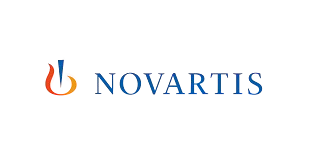





















Patric

Steve Nouri

Michael Ryaboy

Edward A

Tarzine Rack

John

Pete

Adam Nasir
1. INTRODUCTION AND KEY CONCEPTS
- Introduction to ITIL and ITIL 4
- Recap of ITIL 4 Foundation
- Recap of core components of ITIL
- Introduction to DSV
- Importance of Engagement
- DSV: Key Terms and Concepts
2. THE CUSTOMER JOURNEY
Understanding customer journeys
• Purpose and value of customer journeys
• Steps involved in customer journeys
• Stages involved in customer journeys
• Touchpoints and interactions
• Mapping customer journeys: Need and purpose
• Draw a customer journey map
• Customer experience
• Key aspects involved in designing customer journeys
• Design thinking
• The role of Behavioural Psychology
• Design and culture
• Measuring and improving customer journey
3. CUSTOMER JOURNEY: EXPLORE
Explore: overview and common pitfalls
• Explore: from the service consumer and provider perspective
• Purpose of the organization and different stakeholders
• PESTLE and SWOT Analysis
• Objectives and opportunities for service risks and mitigation
• Identify, evaluate and select service providers
• Understanding markets
• Market segmentation
• Identifying and analyzing service consumers
• Targeting markets and value proposition
• Marketplace and marketspace
• Personalizing and profiling
• Targeted marketing
• Brand and reputation
• Sustainability and triple bottom-line
• Importance of existing customers
4. CUSTOMER JOUNREY: ENGAGE
Introduction to ‘Engage’
• The purpose of Engage
• Communicating and collaborating
• Listening
• Why care about diversity in communication
• Types of service relationships – Parts 1 and 2
• Service relationship
• Service relationship ladder
• Service relationship ladder: Creating an environment that allows relationship patterns to emerge
• Service relationship ladder: Building and sustaining trust and relationships
• Understanding service provider capabilities
• Understanding customer needs
• Supplier and partner relationships
• Applying Practice: Key aspects of Relationship Management
• Applying Practice: Practice Success Factors (PSF) in Relationship Management
• Applying Practice: Practice Success Factors (PSF) in Supplier Management
5. CUSTOMER JOURNEY: OFFER
Purpose of ‘Offer’
• Managing demand and opportunities
• Shaping and smoothing demand
• Business case
• Specifying and managing customer requirements
• Minimum Viable Product
• User stories and story mapping
• Applying the MOSCOW method
• Weighted Shortest Job First (WSJF)
• Designing service offerings and user experience
• Lean thinking
• Agile software development approach
• Designing approaches
• Design for onboarding
• Selling and obtaining service offerings
• Applying practice: Business Analysis
6. CUSTOMER JOURNEY: AGREE
- Introduction to ‘Agree’
• Purpose of Agree
• Service value drivers
• Service interaction method
• Service quality and service level
• Characteristics of service
• Negotiating and agreeing service
• Forms of agreement – Parts 1 and 2
• Outcome-based Agreements
• Consumer needs to Agreement
• Content and structure of SLA
• Negotiating and agreeing utility, warranty, and experience
• Negotiating and agreeing other terms and conditions
• Standardizing and automating agreements
• Applying Practice: Service Level Management
• Applying Practice: Practice Success Factors (PSF) Part 1
• Applying Practice: Practice Success Factors (PSF) Part 2
7. CUSTOMER JOUNREY: ONBOARD
- Purpose of ‘Onboard’
• Planning Onboarding
• Fostering relationships with users
• User engagement and delivery channels
• Enabling users for services
• Enabling mutual capabilities
• Offboarding customers and users
• Applying practice: Service Catalogue Management
• Practice Success Factors of Service Catalogue Management - Part1
• Practice Success Factors of Service Catalogue Management - Part 2
• Applying Practice: Service Desk
• Applying Practice: Practice Success Factors (PSFs) - Part 1
• Applying Practice: Practice Success Factors (PSFs) - Part 2
8. CUSTOMER JOURNEY: CO-CREATE
- Purpose of ‘Co-create’
• Fostering a service mindset
• Service mindset: Provision
• Service mindset: Consumption
• Provision of user services
• Activities within ongoing Service Interactions
• Service requests
• Service desk interactions
• Exceptions – when things go wrong
• Moments of truth
• Intelligent disobedience
• Customer and user feedback
• Nurturing user communities
• Applying Practice: Co-create
• Applying Practice: Practice Success Factors (PSFs) – Part 1
• Applying Practice: Practice Success Factors (PSFs) – Part 2
9. CUSTOMER JOURNEY: REALIZE
- Purpose of ‘Realize’
• Validating service value
• Tracking value realization
• Service profit chain model
• Tracking experience and satisfaction
• Assessing and reporting value realization
• Evaluating value realization and improving customer journeys
• Evaluation, verification and continual improvement
• Realizing value for the service provider
• Charging and billing
• Applying Practice: Portfolio management
• Applying Practice: Practice Success Factors (PSFs) – Part 1
• Applying Practice: Practice Success Factors (PSFs) – Part 2
View More
View More

Understand the characteristics of markets & design activities to enhance business outcomes.
Learn how to identify service providers and explain their value propositions.
Plan for value creation to negotiate and agree on service utility, warranty, and experience.
Analyze customer needs and demonstrate techniques for effective communication/collaboration.
Apply suitable strategies to mutually elevate customer and service provider capabilities.
Understand how users can request services and develop user engagement and delivery channels.
Familiarize yourself with the exam structure, question types, and time limits.

A prerequisite is to have successfully completed the ITIL Foundation certification.
It is recommended to have the ITIL 4 Managing Professional certification, but not mandatory.
Practical experience in IT service management is beneficial but not required.

View More
View More
View More
View More
View More
View More
Read More...
Read More...
Read More...
Need More Information ?

View More





